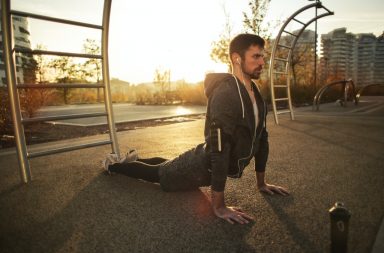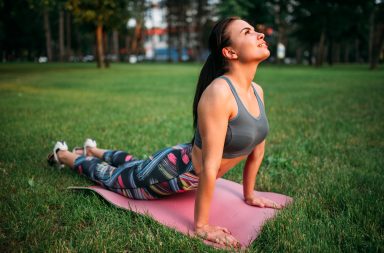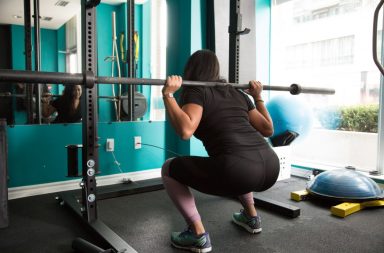Hamstrings. You’ve heard of them. You know you’ve got them. You see athletes injure them – a lot, in fact. But where exactly are they? What are they? What do they do? Does it really matter if they’re tight? And if they are, do you need to know how to loosen tight hamstrings?!
Well, firstly… breathe! Secondly, we’re here to help.
We’ve all seen athletes suddenly stop mid-stride. Or fall to the ground clutching their thighs. The common culprit? Their hamstrings. The very same muscles that saw Usain Bolt crash out of his final race at London 2017.
When it comes to our own hamstrings however, it’s an area we don’t often give much thought to… until something isn’t right. Maybe you felt a twinge after running. Perhaps leg day didn’t go as planned. You might even have tried to touch your toes – but that hasn’t ended well since you were five. You know your legs feel tight. The question is, how do you fix it?
Unsure how to relieve tight hamstrings? Let’s find out!
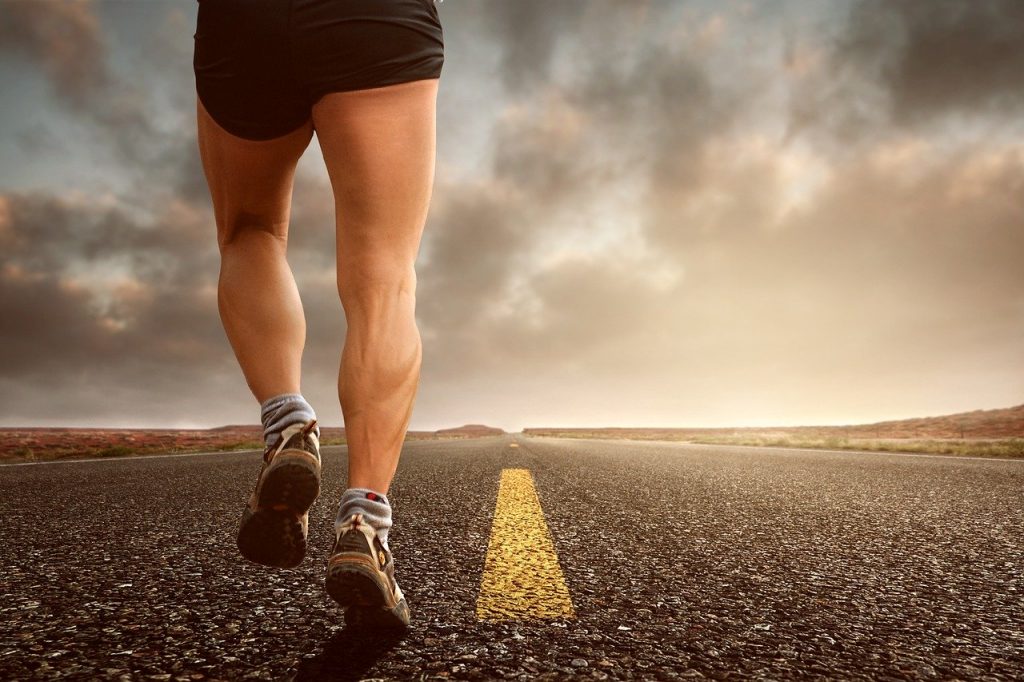
Where are your hamstrings?
Are you sitting comfortably? Fantastic! Please let us interrupt that for just a moment, and ask you to shuffle to the edge of your seat. Ready? Now rest your hand on the back (or underside) of your thigh, and press your heel to the floor, as you would to stand up. Can you feel your thigh tense beneath your hand? Those are your hamstring muscles hard at work.
(Incidentally, if you weren’t actually sitting comfortably and you’re in need of some gentle rejuvenation, a foam roller works wonders! More on that a little later)
Foam Roller Exercises for Your Lower Back and Hips
Alternatively, you can also feel your hamstrings while standing up. Again, place your hand on the back of your thigh. As soon as you start to walk, you’ll feel those same muscles hard at work through each step. Depending on where exactly you are, you might also attract a few confused looks. So we recommend maybe trying this one indoors.
So that’s your muscle group nicely located, and a few odd glances probably gained. But in order to learn how to loosen tight hamstrings – and how to loosen tight hamstrings effectively – it’s also important to first understand the role they play.
So it’s onto your next two questions; what are your hamstrings, and what exactly do they do?
What are your hamstrings?
The hamstrings are a group of muscles and tendons found at the back of your thigh.
The three hamstring muscles originate at the bottom of your pelvis. Or, to be a little more precise (and a whole lot less scientifically-inclined), they originate at the ‘bony bit’ of your bum.
From there, the muscles extend down the back of your thigh, across your hip and knee, to the top of your lower leg bone. The hamstring tendons connect the muscles to your lower leg either side of the knee.

Image credit: Victor Rodriguez
What do your hamstrings do?
This muscle-tendon tag team provides the movement for everyday activities such as walking, running, jumping, and climbing stairs. They enable:
- Knee flexion – your hamstring muscles are the reason you’re able to bend (or flex) your knees. In addition, they allow the inward and outward movement of your lower legs, and help refine your speed and walking position.
- Hip extension – your hamstrings assist in the straightening (or extension) of your hips, and the backward movement of your thighs when you walk. They also serve to power you forward through running.
So sure, your glutes might steal most of the powerhouse glory. But without the aid of healthy hamstrings, you’d find yourself in a spot of trouble. Squatting down, moving from seated to standing, and even staying upright, all rely on your hamstrings.
So it’s important to remember that in the same way that your joints sometimes need a little extra consideration, your soft tissues can need a spot of TLC too.
Which neatly leads us onto your next question.
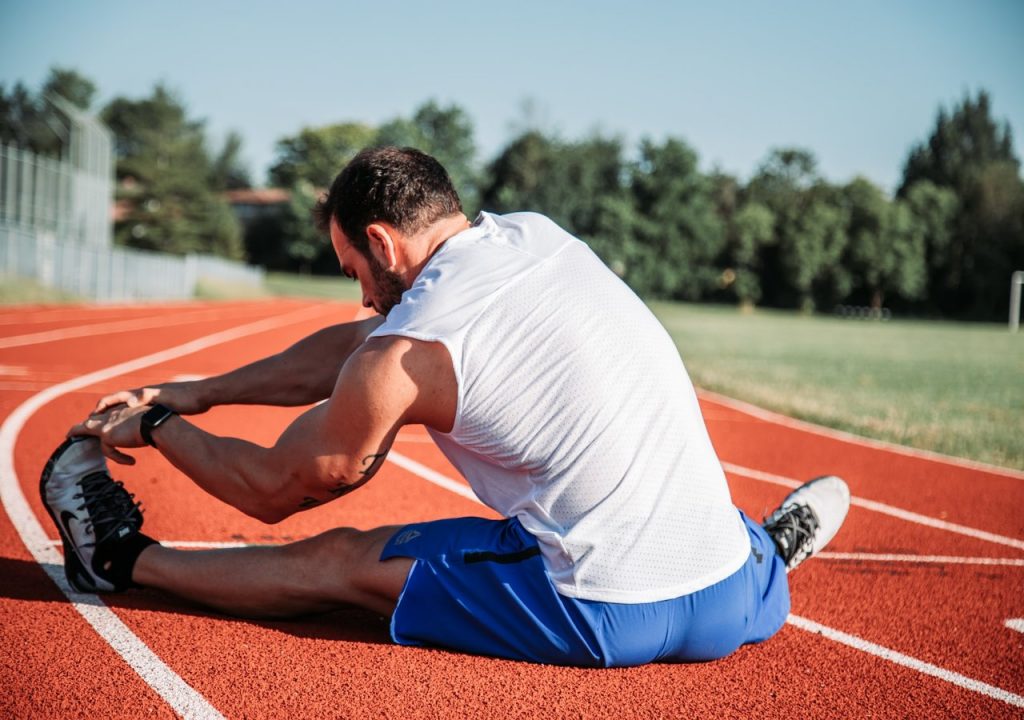
Image credit: Alora Griffiths
Does it matter if your hamstrings are tight?
Tight hamstrings aren’t just a literal pain in the backside. They can also leave you prone to injury and cause problems elsewhere in the body.
Acute hamstring injury
According to the NHS, Risk factors for hamstring injury include:
- Muscle imbalance
- Reduced flexibility
- A burst of sudden or explosive movement
Any abrupt change in pace, direction, or muscle-load has the potential to cause an acute injury. At best, you might have a ‘mild’ Grade 1 strain and only need a few days to recover. At worst, you could experience the full and foreboding ‘pop’ and pain of a Grade 3 tear; the kind of injury that leaves those seasoned athletes sprawled on the field, track or pitch.
Hamstrings and postural alignment
That’s not to say hamstring trouble always leaves you in a heap on the floor. When it comes to the effects of tight hamstrings, symptoms don’t always turn out to be so dramatic. Or even stay confined to your thigh, for that matter. The consequences can be a lot more subtle.
Alongside knee and hip movement, your hamstrings play an important role in controlling your posture. By keeping your spine and pelvis aligned, they promote the natural curve and tilt of your lower back and pelvic regions.
Tight, or shortened, hamstrings can throw that alignment off-balance. This, in turn, can lead to a reduced range of motion, and potentially cause pain in your lower back and legs.
Not a great position to be in, but it does give us our first clue on how best to loosen those tight hamstring muscles.
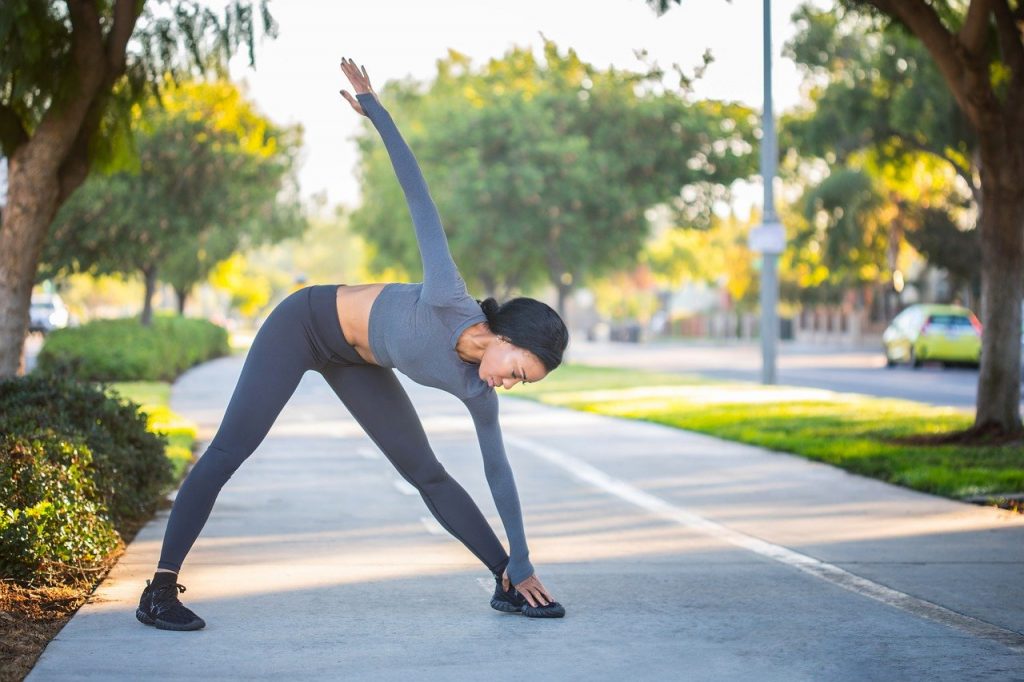
Does stretching loosen tight hamstrings?
It’s at this point that you might be expecting us to shout ‘Yes! Stretch!’. And stretching certainly does play its part. But to successfully improve hamstring flexibility, you need a multi-pronged approach.
What’s the best way to loosen tight hamstrings?
Through a combination of:
- Stretching
- Massage
- Strengthening
Stretching tips for tight hamstrings
Slowly stretching your muscles will help you to improve – and maintain – hamstring flexibility. This, in turn, leaves your hamstrings less prone to that sudden, dreaded ‘pop’.
Before we show you a few easy stretches, we’ll offer a quick pre-stretch safety tip:
As with any stretching programme, or any form of exercise, it’s important never to force a movement. It might be tempting to push through any resistance (no pain, no gain, right?) but your hamstrings won’t thank you for it. Pain and resistance are our body’s way of saying ‘hang on a sec’. By ignoring those signals and pushing harder, you run the risk of causing further damage. So the first rule of stretching? Take it easy!
If you’re completely new to a hamstring stretch, it can also be easier to start with a little bend in your knee. Go ahead, you’re allowed!
That’s safety covered, so it’s on to the stretches themselves.
Stretches to loosen tight hamstrings include the following.
Hamstring standing stretch (requires a chair or stool)
Keep one foot on the floor and place the heel of your other foot firmly on the seat. Your grounding leg should be straight, and the raised leg as straight as you can manage. Keeping your back straight, simply reach forward towards the foot on the chair. The bend should come from your hips. You’ll feel a gentle stretch at the back of your thigh. Hold for a few seconds. Then switch legs and repeat.
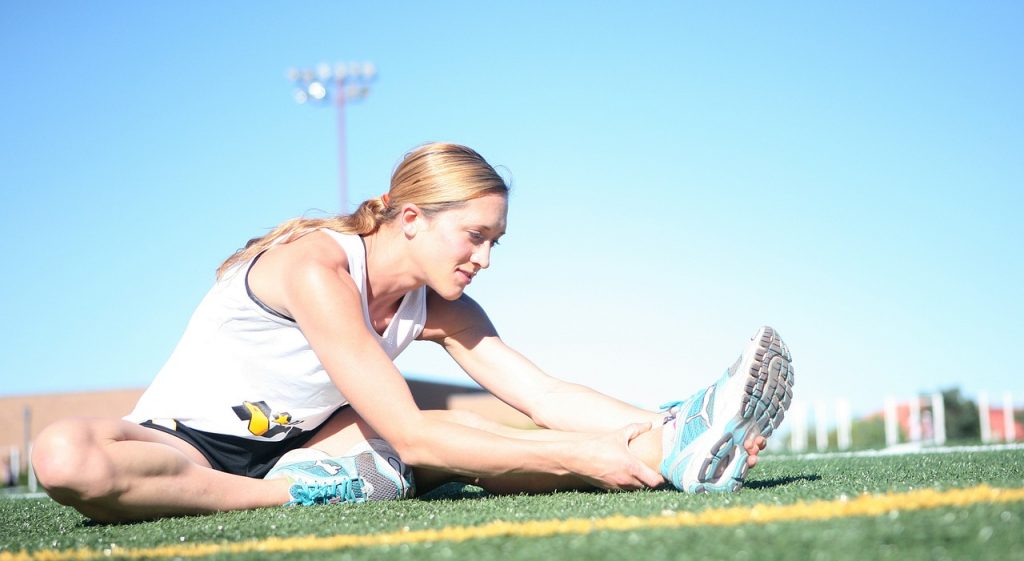
Seated stretch for hamstrings
A slight variation on the first, start by sitting on the floor with one leg straight out in front of you. Bend your other leg at the knee, so the sole of your foot rests against the inner thigh of your straight leg. Now bend at the hips to reach your arms out towards the toes on your straight leg. Hold for a few seconds, then relax. Next, turn your foot to the right (rotating your straight leg outwards) and reach forward, hold and relax. Then repeat by turning your foot to the left (rotating your straight leg inwards) and again reach forward, hold and relax. Then switch legs and repeat.
The one you can do lying down!
Lie on your back on the floor or a firm surface. Place both feet flat on the floor, so your knees are bent. With your hands clasped behind one thigh, gently extend and raise that leg into the air, drawing your foot towards the ceiling. Hold, and then relax. Repeat with the other leg.
Rolling out hamstring woes
You might not need much persuasion to agree to a massage. But just in case one was needed, you’ll be pleased to know that foam rollers do just the job! They’re great for getting your blood flowing, and fab for working out any tightness and tension. Better still, it’s not just your thighs that can benefit. If your lower legs are struggling, they’re the perfect treat for your calves too.
Foam rollers for lower leg TLC
How to release tension from a tight hamstring
Sitting on a floor or firm surface, place the foam roller under your thigh, with your hands placed on the floor behind you. Taking your weight through your hands, lift your hips from the floor and gently push your body forward to roll down from bum to knee. Then roll back again, from knee to bum. Repeat as necessary. For added benefit, hold the move over the tight spot, before rolling further down the leg.
Strengthening exercises for hamstrings
In order for your hamstrings, or indeed any part of the body, to function properly, it’s important to maintain strength as well as flexibility. Strengthening your hamstrings and surrounding structures helps prevent any muscle imbalance. This, in turn, further reduces the chance of acute or recurrent injury.
Why not try the glute and hamstring and bridge?
Lie flat on your back, with your knees bent and feet flat on the floor, around 12 inches away from your bum. Rest your arms straight by your sides. Keeping your head, neck and shoulders on the floor, press down through your heels and lift your hips off the floor, towards the ceiling. Hold briefly when your shoulder, knees and hips are in alignment, then gently lower down.
Or work your bum and the back of your thighs with a standing curl?
Stand with your feet roughly shoulder-width apart. Hold onto the back of a chair or rest your hands on your hips for a bit of extra help with balance. Keeping one foot firmly on the floor, slowly bend the opposite knee, bringing your heel towards the back of your thigh. Slowly lower your foot back to the floor. Repeat as necessary. Then switch to the other side. And relax!
5 best foods to help you unwind
Super tight hamstrings – prevention is better than cure!
It’s always wise to check in with your medical team for any new niggle or ailment, but knowing how to loosen tight hamstrings can be a great first step back to happy health
When it comes to tight hamstrings, prevention is definitely better than cure. Remember to stretch, strengthen and massage those thigh muscles, and above all else, take it easy! With increased strength and improved flexibility, you’ll be right on track to help prevent future injury.
If you have any tips or thoughts you’d like to share, or perhaps you’ve been through a hamstring mishap of your own, please let us know with a comment below.
